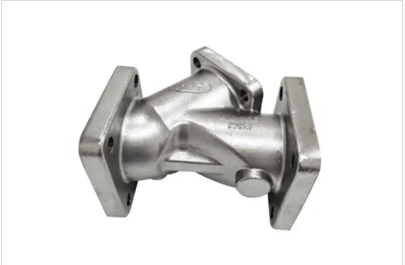Mobile:+86-311-808-126-83
Email:info@ydcastings.com
casting aluminum in sand
Casting Aluminum in Sand An Overview
Aluminum casting is a widely used manufacturing process that allows for the creation of complex shapes and components with great precision. Among the various methods of aluminum casting, sand casting stands out due to its versatility, cost-effectiveness, and the ability to produce both small and large quantities of intricate parts. This article explores the sand casting process, its advantages, applications, and some considerations for optimal results.
The Sand Casting Process
The sand casting process begins with the creation of a mold. The mold is typically made from a mixture of sand and a binder, which holds the sand particles together. The two halves of the mold are formed around a pattern, which is usually made of metal or wood, representing the shape of the final product. Once the pattern is removed, the mold is ready for the aluminum pour.
Aluminum is then heated to its melting point, which is around 660 degrees Celsius (1220 degrees Fahrenheit). The molten aluminum is poured into the prepared sand mold, where it fills the cavity and takes the shape of the pattern. After allowing sufficient time for solidification, the sand mold is broken away to reveal the cast aluminum part.
Advantages of Sand Casting
One of the primary advantages of sand casting is its cost-effectiveness. The materials used—sand and a binder—are inexpensive and readily available. This makes sand casting an ideal choice for both low-volume production runs and larger batch productions. Additionally, the flexibility of the sand mold allows for the casting of complex geometries that would be difficult or impossible to achieve with other casting methods.
Another significant benefit of sand casting is its ability to accommodate large and heavy castings
. Sand molds can be made to various sizes, enabling manufacturers to produce large components for industries like automotive, aerospace, and marine applications.casting aluminum in sand

Applications of Sand Cast Aluminum
Sand-cast aluminum components are widely used in various industries due to their excellent mechanical properties and corrosion resistance. Common applications include engine blocks, transmission cases, structural components, and artistic sculptures. The lightweight nature of aluminum, combined with its strength, makes it especially valuable in the automotive and aerospace industries, where reducing weight while maintaining structural integrity is crucial.
Considerations for Successful Sand Casting
While sand casting offers many advantages, there are several considerations to ensure successful outcomes. Proper mold design and preparation are essential to avoid defects such as air pockets, which can compromise the integrity of the finished product. It’s also vital to control the pouring temperature and speed to prevent issues like incomplete fills or excessive turbulence, which can lead to inclusions or other defects.
Additionally, post-casting processes such as heat treatment, machining, and surface finishing may be necessary to achieve the desired properties and surface quality of the aluminum component.
Conclusion
Casting aluminum in sand is an efficient and versatile manufacturing process that continues to be essential in modern manufacturing. With its ability to produce high-quality, complex parts at a relatively low cost, sand casting remains a popular choice among industries requiring durable aluminum components. By understanding the intricacies of the sand casting process and addressing its challenges, manufacturers can harness its full potential to meet the demands of today’s market.
-
Why Should You Invest in Superior Pump Castings for Your Equipment?NewsJun.09,2025
-
Unlock Performance Potential with Stainless Impellers and Aluminum End CapsNewsJun.09,2025
-
Revolutionize Your Machinery with Superior Cast Iron and Aluminum ComponentsNewsJun.09,2025
-
Revolutionize Fluid Dynamics with Premium Pump ComponentsNewsJun.09,2025
-
Optimizing Industrial Systems with Essential Valve ComponentsNewsJun.09,2025
-
Elevate Grid Efficiency with High-Precision Power CastingsNewsJun.09,2025











